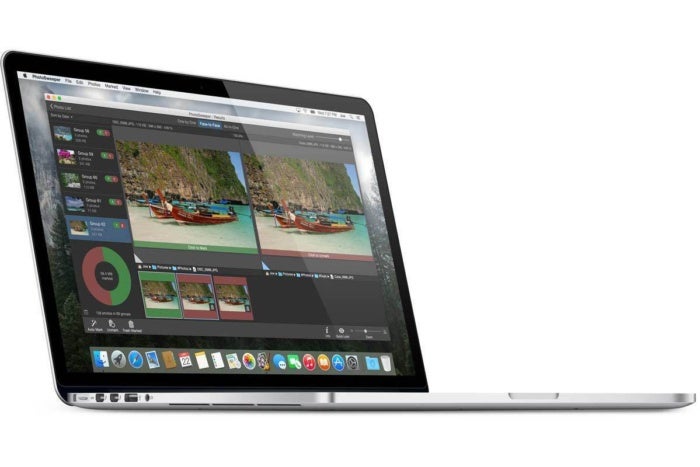The Media Library framework provides a read-only Objective-C data model representing a user’s collections of images, audio, and video. The initial access point of the Media Library framework is MLMedia Library, which loads the user’s media into a hierarchical structure consisting of media sources, groups, and objects. Jan 04, 2020 Moving your library on a Mac that's running macOS Catalina is a different process, mainly because iTunes has been retired as the default application for storing and organizing media. Alternatively, you can press CTRL+L on a PC or command-option+P on a Mac. Select Media Library from the left sidebar in the main playlist view. Chances are you've got all your music in one main folder on your computer or external hard drive.
In the course of creating a movie or trailer, you might use clips and photos outside of your library, especially if a storage device that contains media or iMovie libraries is attached to your Mac. If the media in a movie, a trailer, or an event is located outside your iMovie library, you can consolidate all the media in one location (either on your Mac or on a connected storage device) by copying the media to your iMovie library.
Media Library App Mac
All Media Library is the ultimate database for tracking all forms of media such as CDs, Videos, and Books. All Media Library can catalog millions of items with powerful search features for finding. How to set up an iTunes library on a network-attached server Free your iTunes media from the shackles of a hard drive on your Mac. May 30, 2019 What is the Library folder on Mac? The Library folder In macOS is the system folder which keeps important support files, such as user account settings, preference files, containers, application scripts, caches, cookies, fonts and other service files. All these files help your Mac and applications to function as they should and work fast. Jan 04, 2020 Moving your library on a Mac that's running macOS Catalina is a different process, mainly because iTunes has been retired as the default application for storing and organizing media. As such, your.
Collect the source media files for a library or an event in one location
If you don’t see the Libraries list, click the Libraries List button at the top of the browser.
To select files to consolidate, do one of the following:
Select a library in the Libraries list.
Mac photo library on external drive. Select one or more events in the Libraries list.
Do one of the following:
Consolidate source media for a library: Choose File > Consolidate Library Media.
Consolidate source media for an event: Choose File > Consolidate Event Media.
In the window that appears, click OK.
If a message appears stating that there is nothing to consolidate, all of your media files are already consolidated in one location.
Collect the source media files for a movie or a trailer in one location
Do one of the following:
If the project is not open: Click the Projects button in the toolbar.
If the project is open: Click the Projects back button in the upper-left of the toolbar.
Select the project you want to consolidate, then choose File > Consolidate Project Media.
In the window that appears, click OK.
If a message appears stating that there is nothing to consolidate, all of your media files are already consolidated in one location.
The project media is consolidated into the open library.
Access read-only collections of the user’s multimedia content.
Overview
The Media Library framework provides a read-only Objective-C data model representing a user’s collections of images, audio, and video. The initial access point of the Media Library framework is MLMediaLibrary, which loads the user’s media into a hierarchical structure consisting of media sources, groups, and objects.

At the highest level, all content within a media library instance is categorized by media source. Conceptually, a media source respresents a single app, such as iTunes or Aperture. Each source contains a hierarchy of media groups that originates from a root group. These groups consist of media objects—individual files containing a piece of media such as a photo, song, or movie. Only one copy of each object exists within a media library instance, but an object can be referenced by multiple groups from a single source. The structure of the group hierarchy is specific to each media source.
Topics
class MLMediaGroupThe MLMediaGroup class provides groupings for media objects from a single source of media, such as iTunes or Aperture. The media objects—individual files containing a piece of media such as a photo, song, or movie—are referenced by one or more groups within each media source. These groupings serve as filters, providing hierarchical structure to the collection of objects in each source.
class MLMediaLibraryThe MLMediaLibrary class provides an interface for accessing a collection of media objects from various sources. It serves as the initial access point of the Media Library framework.
class MLMediaObjectThe MLMediaObject class describes a single media file, such as a photo, song, or movie. Each media object contains basic metadata including a name, media type, URL, and so on. Additional information about each object is stored in its list of attributes. For a list of possible object attribute keys, see Media Object Attribute Keys.
Media Library Manager Wordpress
class MLMediaSourceThe MLMediaSource class identifies a specific provider of media. Conceptually, a media source respresents a single app, such as iTunes or Aperture. Each media source contains multiple groups of media objects—individual files containing a piece of media such as a photo, song, or movie.

